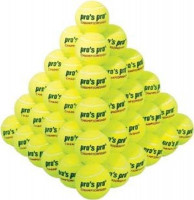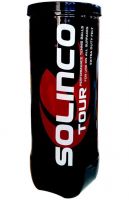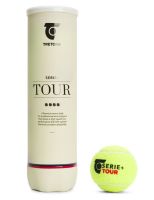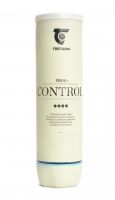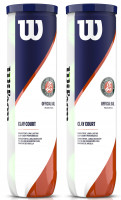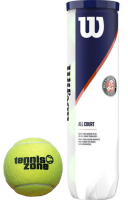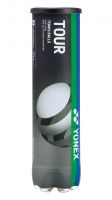The ball is almost as important an element of tennis equipment as a racket. It's obvious there's no game without it. And did you know that a tennis ball was once a wooden ball that was bounced with your hands ?! Only later did the Scots begin using hollow balls and tying them with wool and string. But it wasn't until the 19th century that brought us the prototype of the rubber tennis ball that we know from the courts today.
Have you ever wondered why the ball has a nap? This nap, which is a felt material made of nylon, has a very significant influence on the game of tennis. First of all, it slows down the ball during the flight, allows you to control your shots better and provides an appropriate bounce after bouncing off the ground.
It is worth knowing that the nap on the balls varies depending on the court surface they are dedicated to. So, for artificial and grass courts, the slowest balls, i.e. the fluffiest ones, are chosen. For brick courts we use faster and less fluffy balls. All court tennis balls for all types of courts are also available for sale. Their parameters are averaged to ensure comfortable play and excellent durability. Novice players often do not pay much attention to the proper selection of tennis balls, which may make their game a bit worse. As with any single product, individual tennis balls differ in the quality of the materials used. Some ball models are manufactured using modern technologies that ensure greater playing comfort. Others are characterized by high-quality material that gives better durability to the product. The properties of tennis balls have a huge impact on the course of the match.
We divide tennis balls into pressure, non-pressure and sponge balls. The latter are intended for the youngest children. The most frequently chosen balls are pressure balls, which are used both for training and for tournament play at both amateur and professional levels. During production, they are filled with compressed air. Packing the balls in special pressurized cans maximizes their shelf life. Pressure balls have very good jumping properties. Non-pressure balls are used only for the training game. They are heavier, bounce higher and are much more durable than pressure balls because their interior is not filled with air. They are a frequent choice of trainers and people using the ball launcher.
Tennis balls should be replaced regularly. With a longer period of use, more power and frequency of playing, the ball loses its properties, the rebound becomes lower and the flight slows down. Therefore, it is worth buying higher quality tennis balls to extend the service life and feel the pleasure of playing. Check the offer of Strefa Tenisa and see for yourself that we have the largest selection of tennis balls on the market. All professional brands in one place (Babolat, Head, Wilson, Dunlop, Prince, Tecnifibre, Slazenger and many more). You can buy tennis balls in tubes, packed in 3 and 4 pieces. We have tennis balls in collective packaging at attractive prices, including cardboard boxes, buckets and bags. We recommend this option especially for coaches and intense players. By purchasing several packages of balls at the same time, you will take advantage of the Multipiece promotion, thanks to which you pay less for each package.
Are you a tennis fan? Do you go to various tournaments and hope to get an autograph from your idols? We invite you to familiarize yourself with the offer of our gigaballs- special balls for autographs. Different sizes are available, ranging from 12cm to giant 23cm balls.
We also encourage you to familiarize yourself with our offer of junior tennis balls. If you want to buy tennis balls, but aren't sure which ones will be right for you. Please do not hesitate to contact us! We will answer your questions and help you with any problem!





